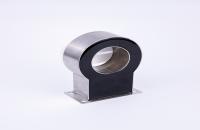
Transformers, as core equipment in power systems, rely heavily on the design of their cores, which directly impacts their performance and efficiency. Among the critical design considerations, magnetic flux density optimization plays a pivotal role, influencing operational efficiency, material usage, and manufacturing costs. This article explores the principles, influencing factors, and methods for optimizing magnetic flux density, providing insights into improving transformer performance.
Magnetic flux density, measured in teslas (T), represents the amount of magnetic flux per unit area within the core. During design, the magnetic flux density must remain below the material's saturation point to avoid nonlinear losses caused by magnetic saturation. Conversely, excessively low magnetic flux density increases the core's volume and weight, leading to higher manufacturing costs. Therefore, the principle of magnetic flux density optimization is to maximize it as much as possible while meeting performance and material limitations, thereby reducing material usage and production costs.
The magnetic properties of core materials are crucial in determining the optimization of flux density. Grain-oriented silicon steel, known for its high permeability and low loss, is the mainstream material for transformer cores. Additionally, the operating frequency is a critical variable. In high-frequency applications, core losses rise significantly with frequency, narrowing the range of feasible flux density. Cooling capabilities and heat dissipation conditions also directly affect the core's temperature rise, indirectly limiting the upper bound of magnetic flux density.

In practical design, several approaches are employed to optimize magnetic flux density. First, high-quality silicon steel or advanced alloy materials are selected to enhance magnetic performance. Second, advanced manufacturing techniques, such as laser scribing, are used to reduce hysteresis and eddy current losses. Third, precise electromagnetic simulations are conducted to optimize the core structure and distribute magnetic flux density effectively. Furthermore, improving cooling systems, such as air or oil cooling, can indirectly increase the permissible magnetic flux density.
Optimizing magnetic flux density reduces the material consumption of the core and significantly lowers core losses, improving transformer operational efficiency and energy savings. Additionally, transformers with reduced size and weight for the same power rating save installation space and cut transportation and installation costs. Thus, magnetic flux density optimization delivers significant economic and environmental benefits.
The Application and Classification of Silicon Steel Sheets in Transformer Cores
2024-11-26What is the difference between 300 series and 400 series stainless steel?
2024-05-08The application of 304 stainless steel plate in construction
2024-07-16What is the difference between steel and stainless steel?
2024-04-26304 stainless steel pipe can also transport gas? Amazing!
2021-10-21Why and how do the stator and rotor "roll"?
2024-03-16






